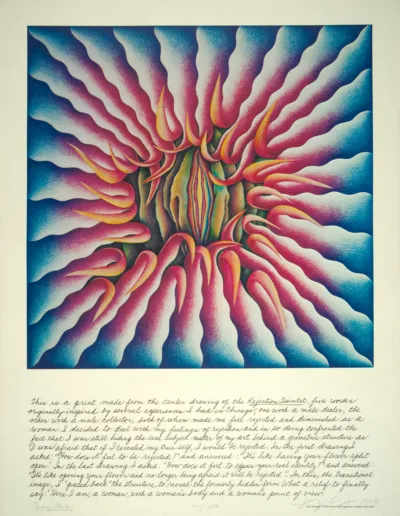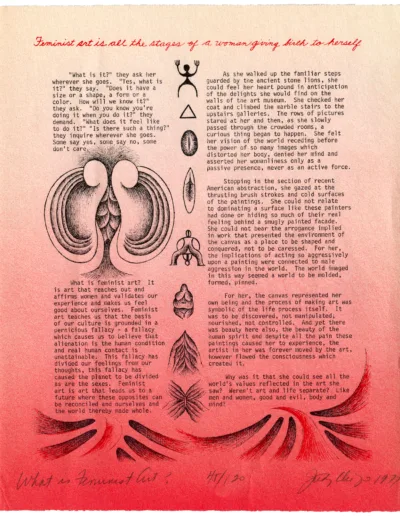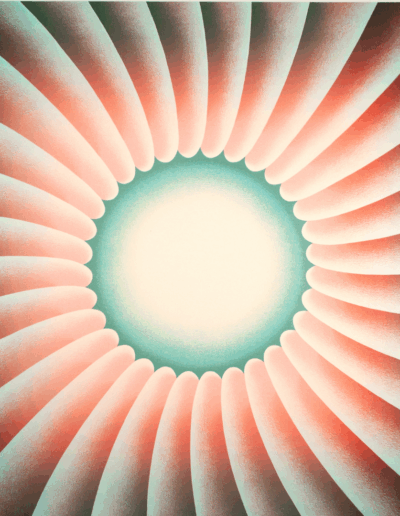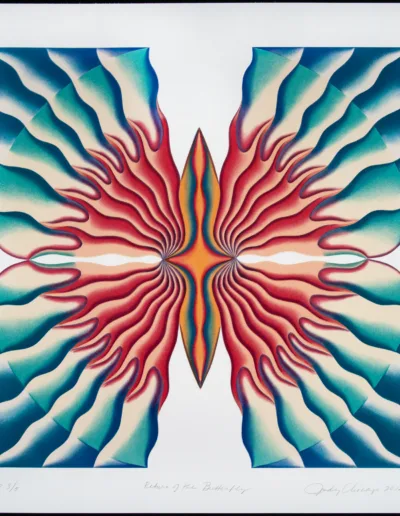JUDY CHICAGO
Judy Chicago is considered one of the foremost feminist artists. Pioneering during a time when women artists were largely sidelined, she is still committed to the power of art as a vehicle for intellectual transformation and social change. She is respected as an artist and humanist whose work and life are models for an enlarged definition of art, an expanded role for the artist, and women’s right to freedom of expression. In 1970, she chose the last name ‘Chicago’ as a declaration of independence, announcing with a full-page ad in Artforum that she was divesting “herself of all names imposed upon her through male social dominance.”
Chicago explores a variety of media and often works with materials that have been considered “women’s craft” such as ceramics, weaving, and needlepoint. Her early engagement with the Californian Light and Space Movement in the 1960s influenced her signature geometric floral pieces, abstractions of glowing color, which represent the physical forms of women. The resulting works, her series Through the Flower,investigate representations of femininity and womanhood, the foundations of her artistic practice.
Unapologetically transgressive, Chicago’s most iconic and controversial work, The Dinner Party (1974-1979), encompasses the history of women in Western Civilization through a large-scale installation. Each plate set for “dinner” is a sculpted and painted interpretation of a vulva that represents major figures throughout history. Chicago presented a taboo as a form of power and rebellion, as a symbol of the women’s empowerment movement for equal rights and social treatment.
The names of another 999 women are inscribed throughout the installation on table cloths hand-stitched by a collaboration of other women artists. This artwork has been seen by more than one million people during its sixteen exhibitions held at venues spanning six countries, and is now permanently housed at the Brooklyn Museum.
Along with themes of women’s empowerment, Chicago also honors her Jewish heritage by creating messages of hope in the wake of the Holocaust. To this day, her art is activist in its foundation. It is an empathetic project driven by the need and desire for social justice and an insistence on aesthetic strategies that don’t require knowledge of art history or critical theory to be legible.
Chicago founded the first feminist arts education program in the United States at California State University, Fresno, then at the California Institute of the Arts a year later. As a connection to feminist activists involved in second-wave feminism of the 1960s and 70s, her autobiography, The Flowering, is introduced in a foreword by Gloria Steinem. Some of the many institutions where her work has been collected and exhibited include the British Museum, Tate Modern, Muzeum Susch (Switzerland), Centre Pompidou (Paris), Whitney Museum, Los Angeles County Museum of Art, Museum of Contemporary Art Los Angeles, Hammer Museum, Getty Trust and Getty Research Institute, San Francisco Museum of Modern Art, Crystal Bridges Museum of American Art, Art Institute of Chicago, the Smithsonian American Art Museum, and the National Museum of Women in the Arts.
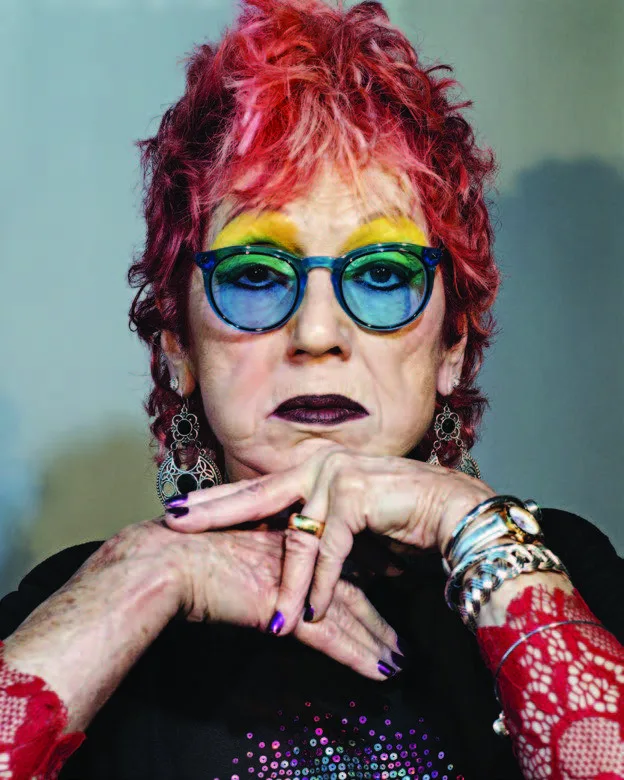
SELECTED WORKS
Peeling Back – From Early Feminist, 1974
Edition 87/95, Offset lithography on rag paper, 28.5 x 22 inches
VIEW WORKS FOR PURCHASE ON ARTSY
Location
23 Emory Place
Knoxville, TN 37917, USA
+ Knox Walls Mural Alley (Partially closed due to construction, access available through the gallery)
OPEN WEDNESDAY – SUNDAY
12 – 5 PM
@2024 Lilienthal Gallery | Designed by J-Bird

